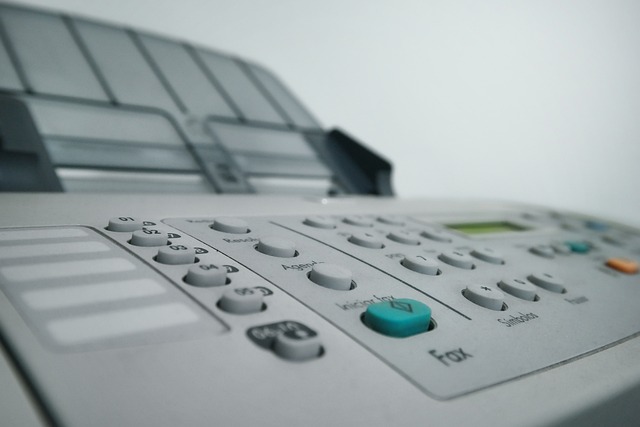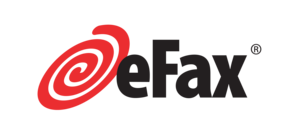Fax and eFax are two common methods of sending and receiving documents electronically. While both serve the same purpose of transmitting documents, they differ in terms of technology, convenience, and accessibility.
Fax Vs. eFax
Fax, short for facsimile, is a traditional method of transmitting documents over telephone lines. It involves scanning a physical document and sending it as a digital image to a receiving fax machine. Traditional fax machines require dedicated phone lines and physical equipment.
eFax, or electronic fax, is a modern method that utilizes internet technology to transmit documents. It eliminates the need for dedicated phone lines and physical fax machines. With eFax, documents are sent and received through email or online fax platforms.
What is Fax?

Fax is a telecommunications technology that allows for the transmission of printed or handwritten documents over long distances via telephone lines. It converts the physical document into electronic signals that can be transmitted and reproduced at the receiving end.
Key aspects of fax technology:
- Document Transmission: Fax machines or fax software send scanned or digitally created documents from the sender’s location to the recipient’s fax machine or computer.
- Telephone Lines: Fax machines use standard telephone lines to transmit the document as analog signals.
- Physical Documents: Fax machines require physical documents to be scanned or fed into the machine for transmission.
- Hard Copies: At the receiving end, the fax machine prints a hard copy of the transmitted document.
- Security: Since fax transmissions travel over phone lines, they are generally considered secure and private, as long as the phone line is not compromised.
- Reliability: Fax technology has been widely used for decades and is known for its reliability in transmitting documents.
- Physical Fax Machines: Traditional fax machines are standalone devices that require paper, ink, and a phone line connection.
Fax technology enables the transmission of documents in their original format, allowing for signatures, annotations, and other handwritten or printed information to be accurately reproduced at the receiving end.
How Does Traditional Fax Work?
Traditional fax works by converting physical documents into electronic signals that can be transmitted over telephone lines to a receiving fax machine. Here is how it works:
- Document preparation: The document to be faxed is placed in the document feeder or on the glass surface of the fax machine.
- Dialing: The sender sets the recipient’s fax number on the fax machine and initiates the transmission.
- Scanning: The fax machine scans the document, converting it into a bitmap image.
- Encoding: The scanned image is encoded into a digital format using a fax modulation scheme, such as Group 3 or Group 4 compression.
- Transmission: The encoded digital data is sent over a telephone line to the receiving fax machine.
- Reception: The receiving fax machine decodes the transmitted data, reconstructing the image.
- Printing: The reconstructed image is printed on the receiving machine.
Traditional fax machines require a telephone line connection and physical documents to be scanned and transmitted. They are widely used in offices and industries where physical signatures or paper documents are necessary.
Suggestions: If you frequently need to send and receive documents, consider using efax services that allow you to send and receive faxes digitally without the need for a physical fax machine. Efax offers convenience, cost-saving, and accessibility compared to traditional fax machines. Before choosing, evaluate your specific requirements and the volume of faxing needed to make an informed decision that suits your needs.
Advantages of Traditional Fax
Advantages of Traditional Fax incorporate several benefits compared to other means of communication. Traditional fax machines are widely used across industries due to their reliability in transmitting documents. They have a proven track record and offer a reliable method of communication.
Furthermore, fax is recognized as a legally valid way to transmit documents in numerous countries. It provides a paper trail that can be relied upon in legal proceedings, contributing to its legal validity.
One of the unique aspects of traditional fax is that it provides a physical copy of the transmitted document. This feature is particularly useful for record-keeping purposes or when a physical copy is required.
Another advantage of traditional fax is its universal compatibility. Regardless of the brand or model, traditional fax machines can communicate with each other seamlessly. This universal compatibility makes it a preferred choice for many businesses.
Security is also a significant advantage of fax machines. Unlike digital transmission methods, documents sent via fax are directly transferred from one machine to another, reducing the risk of interception.
These advantages of traditional fax make it an essential communication tool in various business settings. The reliability, legal validity, and physical documentation it offers are crucial factors to consider. However, it is also important to take into account the evolving technologies, such as efax, which provide additional conveniences and cost savings.
Limitations of Traditional Fax
- The limitations of traditional fax machines include their lack of mobility. These bulky devices require a dedicated phone line, making them difficult to use on the go or in remote locations.
- Another limitation is the dependency on phone lines for communication. Traditional fax machines rely on these lines, which can be unreliable or subject to disruptions.
- Furthermore, the cost of equipment and maintenance is a significant factor. Setting up and maintaining a traditional fax machine can be expensive, considering the machine itself, paper, ink, and regular maintenance.
- Physical space requirements are also a limitation. Traditional fax machines take up physical space in an office or workspace, which can be problematic in smaller or crowded environments.
- Moreover, limited storage capacity is another drawback. Fax machines can only store a limited number of faxes, risking lost documents if the machine is not regularly checked and emptied.
- Inconvenience for recipients is yet another limitation. Traditional faxing requires recipients to have access to a physical fax machine and be present to receive the fax, causing delays and potential security risks for unattended sensitive information.
- Finally, the lack of security is a major concern. Traditional faxes are susceptible to interception, unauthorized access, or loss of documents during transmission, posing potential risks to privacy and confidentiality.
What is Efax?

Efax is a digital alternative to traditional fax machines that allows users to send and receive faxes electronically via email or online platforms. It eliminates the need for physical fax machines, paper, and phone lines, making faxing more convenient and efficient.
Key features of Efax include:
- Email Integration: Efax integrates with your existing email system, allowing you to send and receive faxes directly from your email account. Faxes are sent as email attachments, making them easily accessible and shareable.
- Online Faxing: Efax services provide online platforms or web portals where you can access and manage your faxes. This allows you to view, download, store, and organize your faxed documents from any internet-connected device.
- Virtual Fax Number: Efax assigns you a virtual fax number, which acts as your digital fax line. You can receive faxes on this number, and they will be delivered to your email or online account.
- Document Conversion: Efax services often include features that convert incoming faxes into digital formats, such as PDF or TIFF files. This allows for easy viewing, editing, and sharing of faxed documents.
- Security and Privacy: Efax providers prioritize the security and privacy of your faxed documents. They use encryption and secure protocols to protect your data during transmission and storage.
- Archiving and Searchability: Efax services typically offer features to archive and store your faxes digitally. This allows for easy search and retrieval of past faxes, eliminating the need for physical filing systems.
Efax offers a modern and efficient way to handle fax communications, providing the benefits of convenience, accessibility, and digitization. It is a popular choice for businesses and individuals who still require faxing capabilities but prefer a more streamlined and environmentally friendly approach.
How Does Efax Work?
Efax operates by converting documents into a digital format and transmitting them over the internet. Instead of using a physical fax machine, efax utilizes online platforms or software to send and receive faxed documents.
To send a fax using efax, the user first scans the document or creates a digital file. The file is then uploaded to the efax service, where it is converted into a fax format. The efax system then transmits the fax electronically to the recipient’s fax number or email address. The recipient can receive the fax on their computer or mobile device, where it can be viewed or printed.
One advantage of efax is its convenience and accessibility. Since efax operates online, users can send and receive faxes from anywhere with an internet connection. It eliminates the need for a physical fax machine and allows for quick and easy transmission of documents.
Efax also has its limitations. It relies on a stable internet connection, so if the connection is weak or disrupted, fax transmission may be affected. Some recipients may still prefer to receive faxes in physical form, which may require the fax to be printed.
Pro-tip: When using efax, ensure that your documents are in a compatible file format, such as PDF, to ensure smooth transmission. Always double-check the recipient’s fax number or email address to avoid any delivery errors.
Advantages of Efax
- One of the main advantages of Efax is its convenience. With Efax, you don’t need bulky fax machines or physical paper to send and receive faxes. Everything can be done digitally, allowing you to easily manage and organize your faxes.
- Efax can help save costs in various ways. You eliminate the need for traditional fax machines, which can be expensive to purchase and maintain. You save on paper and ink costs since Efax allows you to send and receive faxes electronically. This also means no more wasting paper on unwanted faxes.
- Efax offers enhanced accessibility compared to traditional fax. With Efax, you can access your faxes from anywhere with an internet connection. This allows for greater flexibility and convenience, especially for those who are constantly on the move or working remotely.
- Efax streamlines the faxing process and improves efficiency. Sending and receiving faxes is faster, as there is no need to wait for paper documents to be physically delivered. Efax allows for easy searching, organizing, and forwarding of faxes, making it easier to manage your fax communications.
- By adopting Efax, you contribute to environmental sustainability. With no need for paper and ink, you reduce paper waste and the carbon footprint associated with faxing. Efax aligns with eco-friendly practices and promotes a paperless office environment.
Limitations of Efax
- When considering Efax, it is important to keep in mind the limitations of this service. First and foremost, you need to have a stable and reliable internet connection to use Efax effectively. Without a good internet connection, your ability to send and receive faxes may be hindered.
- Additionally, some Efax providers may impose limitations on the number of faxes you can send or receive within a specific time frame. It is essential to be aware of these limitations before choosing a provider.
- Since Efax relies on digital technology, there is always a possibility of encountering technical issues like server downtime or system failures. These issues can disrupt your faxing activities and cause inconveniences.
- Moreover, certain file types or documents may not be compatible with Efax. This can be especially problematic if you need to fax files that require physical signatures. So, it is necessary to consider the compatibility aspect while using Efax.
- While most Efax providers prioritize data encryption and privacy, it is crucial to acknowledge that security can be a concern. There is always a risk of unauthorized access or data breaches, even with stringent security measures in place.
Remember to keep these limitations in mind when evaluating whether Efax is the right option for your faxing needs.
Pro-tip: Before selecting an Efax provider, make sure to conduct thorough research on their features, limitations, and user reviews to ensure that it aligns with your specific requirements.
Differences Between Fax and Efax
The differences between fax and eFax include the transmission method, equipment and hardware requirements, costs, and convenience and accessibility. Traditional fax relies on physical fax machines and phone lines, while eFax utilizes digital platforms and email. Efax eliminates the need for expensive equipment and reduces costs associated with dedicated phone lines. It provides convenience and accessibility, allowing users to send and receive faxes from any device with an internet connection.
- Transmission Method: The main difference between Fax and Efax is the way they transmit documents. Fax uses traditional telephone lines to convert documents into signals that are sent over the phone network. On the other hand, Efax uses the internet to send and receive faxes digitally, eliminating the need for a physical telephone line.
- Equipment and Hardware Requirements: When it comes to equipment and hardware, Fax requires a dedicated fax machine connected to a telephone line. Additionally, it requires physical paper and ink for printing received faxes. In contrast, Efax only needs a computer or mobile device with an internet connection, completely eliminating the need for a fax machine and allowing for digital storage of faxes.
- Costs: The costs associated with Fax and Efax differ significantly. Fax can incur additional expenses such as phone line charges, ink, and paper costs. Long-distance faxes may also result in higher charges. On the other hand, Efax usually involves a subscription service that offers different plans based on usage. It eliminates phone line costs and often includes features like online storage and fax management.
- Convenience and Accessibility: When it comes to convenience and accessibility, Fax falls short compared to Efax. Fax requires physical presence for sending and receiving documents, which may involve waiting for busy lines and dealing with paper jams. Conversely, Efax offers the convenience of sending and receiving faxes anytime, anywhere, as long as you have an internet connection. It also allows for easy forwarding and archiving of faxes.
Transmission Method
The transmission method is a key factor to consider when comparing traditional fax and eFax. Let’s take a look at how they differ in terms of transmission method:
| Transmission Method | Traditional Fax | Efax |
| Phone Line | Traditional fax machines require a physical phone line to send and receive faxes. This can be a dedicated fax line or a shared phone line. | Efax eliminates the need for a physical phone line. Faxes can be sent and received over an internet connection, making it more convenient and cost-effective. |
| Documents | Traditional fax machines use physical documents that are scanned and transmitted as analog signals over the phone line. | Efax allows users to send and receive digital documents in various formats, such as PDF, Word, or image files. These documents are transmitted electronically. |
| Speed | Traditional fax machines can be slower compared to eFax, especially when sending large documents or to multiple recipients. | Efax offers faster transmission speeds, allowing for quick and efficient delivery of digital documents. |
The transmission method differs significantly between traditional fax and eFax. While traditional fax requires a physical phone line and utilizes analog signals, eFax operates over an internet connection and sends and receives digital documents. Efax offers advantages such as cost-effectiveness, convenience, and faster transmission speeds. Considering these differences, individuals and businesses may choose the transmission method that best suits their needs and workflow requirements.
True story: Before switching to eFax, our company used traditional fax machines for years. We faced challenges with maintaining multiple physical phone lines and slow transmission speeds, especially when dealing with large documents. Switching to eFax not only eliminated the need for physical phone lines but also improved our efficiency and document handling. Now, we can send and receive digital documents seamlessly, making our workflow smoother and more streamlined. The convenience and speed of eFax have made a significant impact on our day-to-day operations.
Equipment and Hardware Requirements
The equipment and hardware requirements for traditional fax and efax differ significantly.
When it comes to traditional fax, you will need a fax machine, which is a physical device that scans documents and sends them over a telephone line. You will also require a dedicated landline telephone connection. The fax machine must be connected to the landline, and you may also need a dedicated fax number. In addition, the fax machine will need paper and ink or thermal rolls for printing received faxes.
In contrast, for efax, there is no need for any physical equipment. All you need is a computer or mobile device with internet access and an email address. Efax services allow you to send and receive faxes digitally through your email. In this case, you don’t have to worry about ink or paper as the faxes are received and stored electronically.
The equipment and hardware requirements for traditional fax involve a physical fax machine, a telephone connection, paper, and ink. On the other hand, efax eliminates the need for physical equipment and relies on a computer or mobile device with internet access and an email address.
Costs
are an important factor to consider when deciding between traditional fax and efax. Here is a breakdown of the costs for each option:
| Costs | Traditional Fax | Efax |
| Initial Setup | Requires a fax machine and a dedicated phone line, which can be costly. | Requires a computer or mobile device and an efax service subscription. |
| Monthly Fees | No monthly fees, but ongoing costs include paper, toner, and phone line rental. | Typically involves a monthly subscription fee, which can vary depending on the service provider and plan chosen. |
| Long-Distance Charges | May incur long-distance charges for international faxing. | With efax, long-distance charges are often included in the subscription fee, allowing for cost-saving on international faxing. |
| Additional Features | Additional features such as automatic document feeders, speed dialing, and memory storage may require additional costs. | Efax services often offer additional features, such as electronic signatures and fax archiving, which may be included in the subscription or available for an extra fee. |
By considering these cost factors, you can make an informed decision about which option is more financially viable for your needs. Remember to also evaluate the benefits and limitations of each option before making your final choice.
Convenience and Accessibility
Efax offers greater convenience and accessibility compared to traditional fax. With efax, you can send and receive faxes directly from your email or through a web portal, eliminating the need for a physical fax machine and paper documents. This means you can conveniently send and receive faxes from anywhere with an internet connection, making it ideal for remote work or when you’re on the go. Traditional fax, on the other hand, requires physical equipment and a dedicated phone line, limiting its convenience and portability.
Efax provides enhanced accessibility compared to traditional fax. Since efax operates through email or web portals, it allows for easy storage and organization of digital fax documents. You can conveniently access your faxes from any device with an internet connection, making it easier to retrieve and share important documents. Traditional fax, on the other hand, requires physical access to the fax machine and printed documents, which can be a challenge when you’re not in the office or if you need to share documents with remote colleagues.
Efax offers greater convenience and accessibility compared to traditional fax. It allows for easy sending, receiving, storage, and retrieval of faxes from anywhere with an internet connection, making it a more flexible and efficient option for businesses and individuals.
Which One Should You Choose: Fax or Efax?
When deciding between fax and eFax, consider the following factors to determine which option is most suitable for your needs:
- Convenience: Efax offers the convenience of sending and receiving faxes digitally, eliminating the need for physical machines, paper, and ink. Fax, on the other hand, requires a dedicated fax machine and physical documents.
- Cost: Efax services are often subscription-based, with monthly or annual fees. Traditional faxing may incur costs for the fax machine, phone line, paper, ink, and maintenance.
- Accessibility: Efax allows you to send and receive faxes from anywhere with an internet connection, using email or a web interface. Faxing requires a physical machine and dedicated phone line, limiting accessibility.
- Security: Efax provides encryption and secure transmission, ensuring the privacy of your faxed documents. Traditional faxing may be susceptible to interception or unauthorized access.
- Storage and Organization: Efax services often include digital storage and organization features, making it easier to search, archive, and retrieve faxes. Physical faxes require manual filing and may be prone to loss or misplacement.
- Integration: Efax can integrate with other digital platforms, allowing for seamless document management and workflow integration. Traditional faxes may require manual scanning or printing for digital integration.
- Legal Validity: Consider the legal validity of electronic signatures and digital faxes in your jurisdiction. In some cases, traditional faxes may still be required for certain legal or official purposes.
Ultimately, the choice between fax and eFax depends on your specific requirements and preferences. If you value convenience, accessibility, and digital workflow integration, eFax may be the preferred option. If legal requirements or personal preferences favor traditional methods, faxing with a physical machine may be more appropriate.
Frequently Asked Questions
What’s the difference between fax and efax?
Traditional faxing methods involve using heavy hardware units that require landline access and additional expenses for paper and ink toners. On the other hand, efax allows documents to be faxed electronically via the internet, eliminating the need for physical fax machines and associated costs.
How can online fax services be more accessible and affordable for businesses?
Online fax services only require an internet connection, making them more accessible and affordable for businesses compared to traditional fax machines. This eliminates the need for physical presence at a fax machine location and reduces maintenance costs.
What advantages do online fax services have over traditional fax machines?
Online fax services offer several advantages over traditional fax machines. These include greater flexibility and convenience as users can access faxes from anywhere in the world, digital storage options for easier document organization, increased confidentiality through direct email delivery, and superior document access and storage capabilities.
How do online fax services address data security concerns?
Online fax services can implement data security measures such as encryption and password protection to protect sensitive information. This ensures data privacy and security, which was not a major concern during the inception of traditional faxing methods.
Can online fax services be used for legal documentation?
While legal documentation may still require original copies for signing and legal stamps, online fax services allow for the receipt of legal documents with electronic signatures and stamps. This streamlines the process and reduces the need for physical paperwork.
What benefits do online fax services offer for businesses?
Online fax services provide greater accessibility, cost-effectiveness, document organization, confidentiality, and data security. These benefits streamline faxing processes, improve overall efficiency, and are particularly advantageous for businesses that rely on paperless transactions or have remote workers.
Image Credits
Featured Image By – Алексей Подрезов from Pixabay
Image 1 By – Klaus Aires Alves from Pixabay
Image 2 By – Webdev0323, CC BY-SA 4.0 , via Wikimedia Commons









